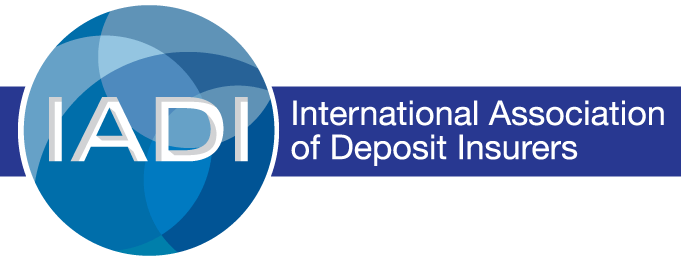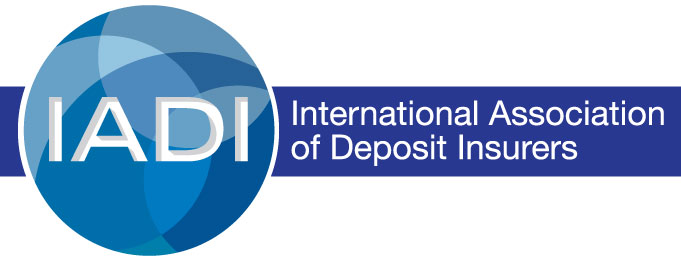Navigating Digital Frontiers: Charting the Future of Deposit Insurance
Welcome Remarks by Mr Alejandro López, President of IADI and Chair of the Executive Council, during APRC/EARC Annual Meeting and Conference
Good morning,
It is my privilege to welcome you, our colleagues and friends, to this important gathering from our community of deposit insurers and central bankers in Almaty. At this first joint international conference by the IADI Eurasia and Asia-Pacific Regional Committees, we are represented by more than 100 participants from over 25 jurisdictions, making today an excellent opportunity to embark on the important agenda of digitalisation and deposit insurance here in Kazakhstan.
On behalf of IADI, I would like to express my sincere gratitude to you for joining us in person today. Your expertise, insights, and dedication to safeguarding depositors and ensuring financial stability are critical as we navigate the risks and opportunities of this digital frontier.
It is a special privilege for us to have, the Governor, Mr Timur Suleimenov, and Deputy Governors Akylzhan Baimagambetov and Vitaliy Tutushkin of the National Bank of the Republic of Kazakhstan.
Also, a warm welcome to, Deputy Chairpersons Nurlan Abdrakhmanov and Olzhan Kizatov from the Agency of Kazakhstan for Regulation and Development of Financial Market, and Elena Bakhmutova, Chairwoman of the Association of Financiers.
Thank you very much for taking the time to be with us today.
I would also like to extend my thanks to our host, Adil UTEMBAYEV of the Kazakhstan Deposit Insurance Fund, for organising this significant event, and to Baatarsuren Sukhbaatar and JaeHoon Yoo, Chairs of the Eurasia and Asia-Pacific Regional Committees respectively.
Here in Kazakhstan, our colleagues are charting an interesting path with the Central Bank Digital Currency, the “Digital Tenge”. The Digital Tenge aims to be part of a robust and continuously innovating financial system, and I look forward to learning more about this today from the representatives of the National Bank and the Kazakhstan Deposit Insurance Fund.
Ladies and gentlemen, deposit insurance systems are the cornerstone of public confidence in traditional banking systems. By protecting depositors, we provide a safety net that assures depositors their deposits are secure. This does not only protect depositors. The trust of these depositors is the very foundation upon which the entire banking system operates. It enables financial stability, and stability enables growth.
However, as digitalisation accelerates, the financial ecosystem is undergoing profound transformation. We thus convene at a pivotal moment. We must investigate how we, as deposit insurers, should adapt to the digital age while staying true to our core mission, and how we can remain a pillar of stability in an increasingly complex financial world.
The theme of today’s conference, “Navigating Digital Frontiers: Charting the Future of Deposit Insurance”, captures the relevance and complexity of the task before us. Digitalisation is transforming the financial landscape at an unprecedented pace, introducing new instruments, technologies, and behaviours that demand our attention and adaptation. From central bank digital currencies (CBDCs) to stablecoins, e-money, and tokenised deposits, the rise of digital finance presents both opportunities and risks for deposit insurance systems.
Here in Almaty, we will explore these themes in depth. Our agenda is ambitious, yet it is essential to confront these issues head-on if we, as deposit insurers, are to fulfil our mandate of protecting depositors and fostering financial stability.
The conference today connects very well to the overall strategy of IADI as an Association. As you may know, the work of IADI currently focuses on three strategic priorities. The first and most important priority is the work on the review of the IADI Core Principles for Effective Deposit Insurance Systems. This work is ongoing, but we intend to finalise it soon at our upcoming EXCO meeting in Chinese Taipei. The other priorities include work on the interaction between deposit insurance and resolution, and on digitalisation.
In the field of digitalisation, work is ongoing to analyse the potential impact of digitalisation and financial innovation on deposit insurance systems. This includes a number of issues, many of which are also part of today’s meeting agenda.
A first issue we are looking into is the impact on deposit insurance systems of new types of digital money. These include public currencies such as Central Bank Digital Currencies, or new types of private digital money, such as e-money or stablecoins.
A distinct feature of Central Bank Digital Currencies is their public nature. They represent a claim on the central bank, as opposed to an insured bank deposit, which represents a claim on a private bank. CBDCs can come in multiple variants. These range from wholesale CBDCs, mainly for settlement of interbank payments using blockchain technology, to retail CBDCs, which can ease retail payments or assist in reaching financial inclusion policy aims. As deposit insurers, we would be interested in understanding whether and to what extent CBDCs may function as substitutes for bank deposits, be it for transactional purposes or for value storage, and how they may impact financial stability.
Private digital money, be it the more traditional e-money or blockchain-based stablecoins, adds further opportunities and challenges to the digital landscape. Although we see substantial variation, in some regions, these instruments, issued by private entities, are increasingly relevant as payment methods or sometimes even as value storage mechanisms. Yet, their regulatory and legal frameworks remain uneven across jurisdictions, and it is unclear whether they sufficiently cater for all risks to financial stability.
Should users of stablecoins and e-money be protected by deposit insurance? If so, what preconditions must be met to ensure that such protection aligns with our public policy objectives? What happens if, in the absence of deposit insurance protection for stablecoins, the bank fails where the stablecoin issuer has deposited its backing assets? Will that trigger protection? And how can deposit insurers address the risks associated with these digital money types, such as technological vulnerabilities, regulatory arbitrage, and potential impacts on financial stability? These are all pressing questions. In IADI, work on the deposit insurance treatment of e-money is well advanced, and I look forward to gaining further insights on the issue of stablecoins in today’s conference.
Tokenisation, especially of deposits, is a technical innovation that represents even more similarities with traditional bank deposits. Although stored on blockchain or distributed ledger technology, tokenised deposits represent an individual claim on a private bank. Tokenised deposits are programmable, enabling new financial products and services that could enhance settlement efficiency, promote financial inclusion, and drive innovation.
We face some pressing questions here as well. When do tokenised deposits qualify as deposits eligible for deposit insurance? How does the tokenisation technology affect the operationalisation of the coverage by deposit insurance? Here as well, I look forward to the insights we will be gaining today.
Other aspects of IADI’s ongoing work include the growing relevance of non-bank actors such as fintechs, bigtechs, or deposit aggregators, and the wider implications of new technology. I touched upon blockchain technology already, but more generally, the use of artificial intelligence and the operational cyber risks inherent to the use of digital technology may also impact our operations.
Let me encourage all IADI members present here today to get involved in this work, be it through contacting the Secretariat, which is also present here today; by becoming an active member of the Fintech Technical Committee; or by participating in the interesting expert webinars that the Secretariat is organising over the next couple of months and that allow you to learn more about many of the issues that we will discuss here today as well.
All these efforts in the Association will culminate in a public IADI report on the impact of digitalisation and financial innovation on deposit insurance systems. This report will allow us to focus our efforts in the near future on topics of pertinent interest to our members.
As you can see, IADI is devoting considerable resources to digitalisation through a number of activities and avenues to the benefit of our members.
Today’s joint EARC and APRC in-person event here in Almaty is an important element of these activities and will allow us to improve our understanding of how digital innovation may impact deposit insurance systems.
Thank you again to the Kazakhstan Deposit Insurance Fund for hosting us today, and I wish you all an interesting conference.

